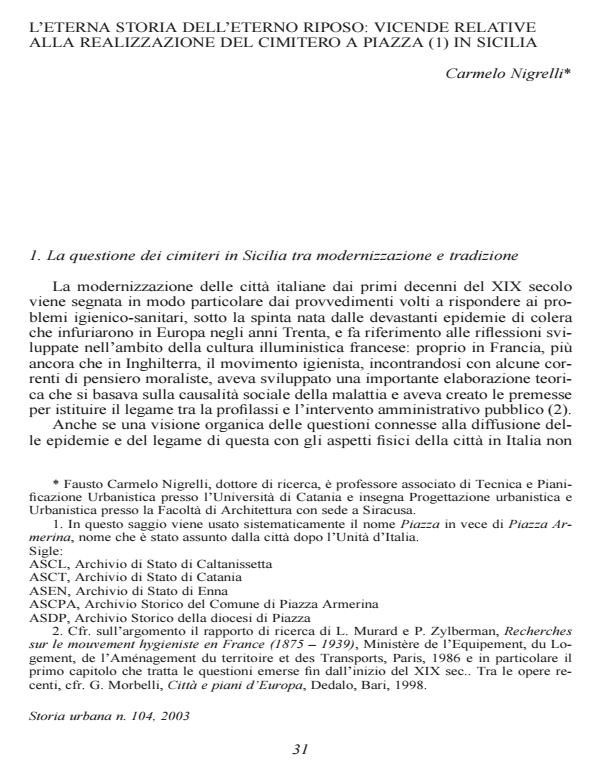L'eterna storia dell'eterno riposo: vicende relative alla realizzazione del cimitero a Piazza, in Sicilia
Titolo Rivista STORIA URBANA
Autori/Curatori Carmelo Nigrelli
Anno di pubblicazione 2005 Fascicolo 2003/104
Lingua Italiano Numero pagine 27 P. Dimensione file 1292 KB
DOI
Il DOI è il codice a barre della proprietà intellettuale: per saperne di più
clicca qui
Qui sotto puoi vedere in anteprima la prima pagina di questo articolo.
Se questo articolo ti interessa, lo puoi acquistare (e scaricare in formato pdf) seguendo le facili indicazioni per acquistare il download credit. Acquista Download Credits per scaricare questo Articolo in formato PDF

FrancoAngeli è membro della Publishers International Linking Association, Inc (PILA)associazione indipendente e non profit per facilitare (attraverso i servizi tecnologici implementati da CrossRef.org) l’accesso degli studiosi ai contenuti digitali nelle pubblicazioni professionali e scientifiche
The development of legislation to establish the construction of cemeteries as public facilities in consideration of public health issues originated in France during the Age of Enlightenment. This concept began taking root in Sicily and in the South of Italy with a slight delay in comparison with the other European countries. Further, more substantial delays are due to the fact that some municipalities have never observed the rules issued by King Ferdinand I since 1817, nor those established by the new Savoy kingdom after the unification of Italy. In the outline of the events related to the creation of the cemeteries in Eastern Sicily, the events of Piazza (Armerina since 1862), one of the main centres of the administrative system of the island (it was district capital since 1812, then subintendency and seat of bishopric since 1817), represent an interesting case study for the reconstruction of a debate which started just after the Bourbon law and ended during the 1880’s with the opening of two separate public cemeteries.
Carmelo Nigrelli, L'eterna storia dell'eterno riposo: vicende relative alla realizzazione del cimitero a Piazza, in Sicilia in "STORIA URBANA " 104/2003, pp , DOI: